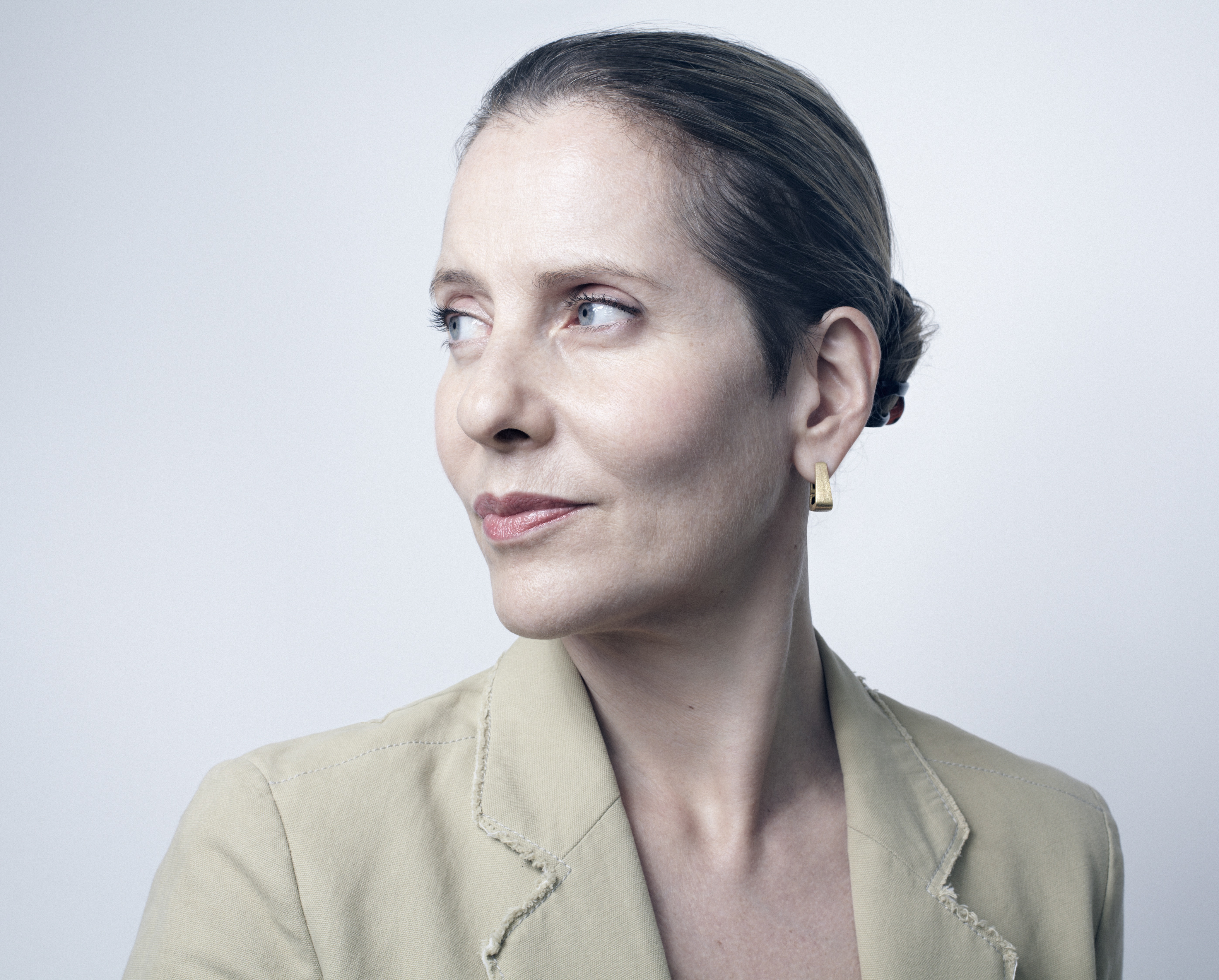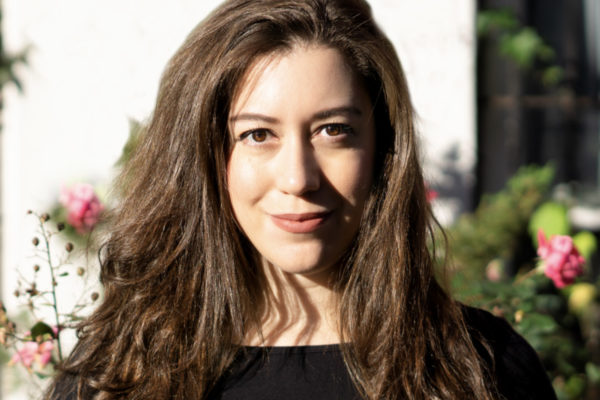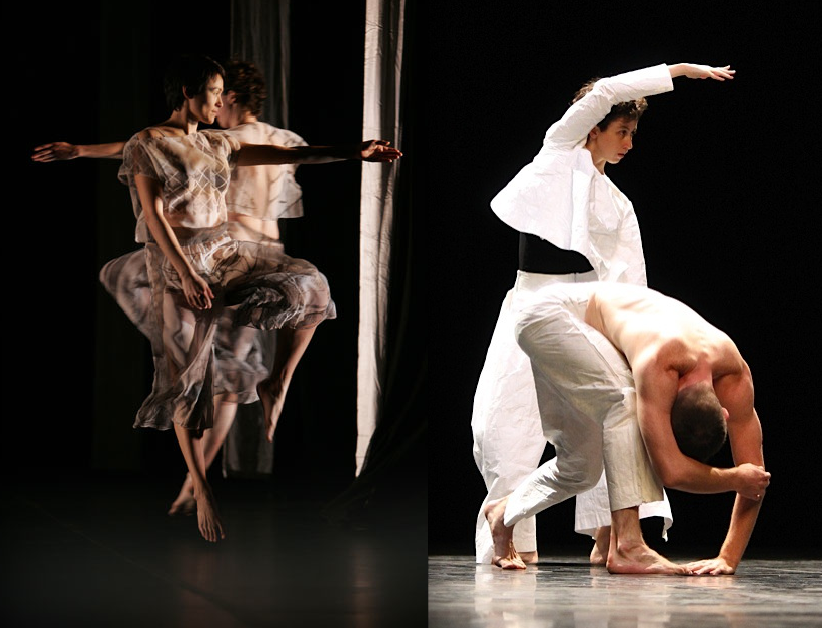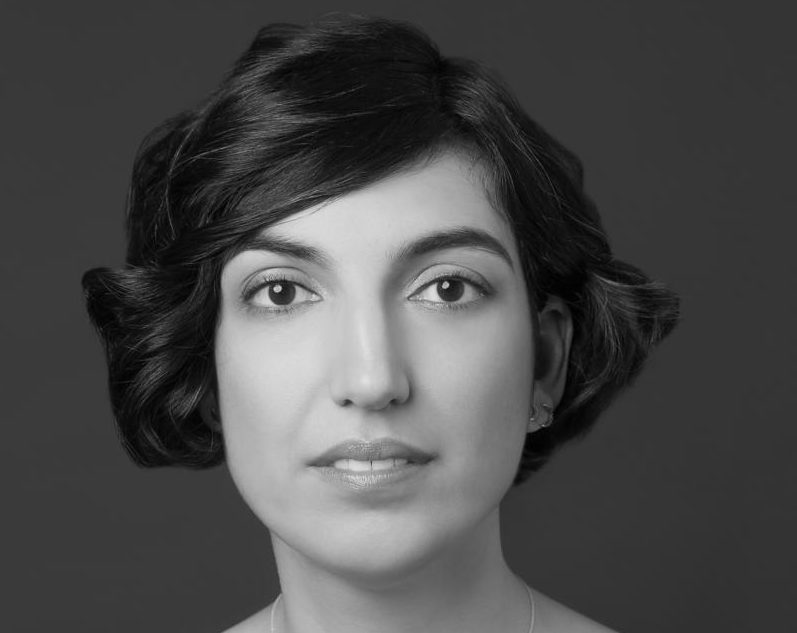I was introduced to Paola Antonelli— the Senior Curator of Architecture & Design from the Museum of Modern Art—at her lecture at the Lenfest Center for the Arts in October 2019, Broken Nature: Design Takes on Human Survival. I didn’t know how it would feel to have the Senior Curator of Architecture & Design from the Museum of Modern Art stand in front of a decent, 140 or so person crowd and tell me that our extinction was imminent. I knew it to be true already, I learned it in high school in World History: Empires Fall. But I never had anyone say it right to my face. It felt like this:
Muscles on either side of my collar bone were trying to crawl across each other. My legs were crossed one way and I uncrossed them, tighter, to the other side. I took my glasses off because I suddenly had a headache. I felt like my chest could crack open, could have cracked open right then and I would to start spill out in two flumes of fluid that would stream upward from my chest and then fall to either side of my elbows. I thought I might keep spilling out of myself and if someone looked over they’d see a kaleidoscope because that is what would be happening to me. I would be spinning, cyclical, but bursting too.
What brought me back into the room was Antonelli saying, “there is no drama in the beginning or end of life.” She told the story of a 70-year-old women coming up to her in her recent exhibit of Broken Nature and asking how she could donate her body post-The End in order for the parts of herself to be put to use. “Isn’t that beautiful?” Paola asked. I started to listen again. Then I wanted to know more about what she thought and had to say so I rang her to talk about the Economist’s obituaries, water and early morning exercise.
Here’s how it went:
What wakes you up in the morning and gets you out of bed?
I like to wake up early in the morning to have time by myself and go to the gym. I do pretty much everything: yoga, pilates, HIIT—anything that comes my way. Except running. I hate running.
What’s a question you’ve been grappling with lately?
Lately I’ve been very, very concerned about politics. I’m wondering when this nightmare will be over.
If you could live for another 100 years, what are the top three changes you would make in your life?
Pretty much none! I really love my life. I would just keep going in the same direction. I’m moved by curiosity and by a true passion for the world. I would keep going and develop my interest in other species. That’s what I’ve been really fascinated by. I would like to try and continue the research I’m doing but make it more altruistic and open to the rest of the world instead of just human beings.
How do you connect with nature?
In many different ways. I’m not spending that much time in the kind of stereotypical idea of nature that we have (meaning parks, amongst trees) I should do that more… But the best way for me to connect to nature is always the sea and the water. I feel really connected and happy when I am by the water.
Favourite place to go to the water in New York?
I like both rivers, but I have a special passion for the FDR drive. In particular, there’s one part that I love underneath the FDR between the Manhattan and the Brooklyn Bridge. It is a beautiful spot that once upon a time used to be China town.
I’m worried that, like the Hudson river, it is going to be completely sanitized and made into a place where you can’t do this and you can’t do that (ride your bike, walk your dog). I hope that doesn’t happen. The East River drive is fantastic because it’s still a little unkempt.
Can you tell me about any moments from your youth that stand out as integral to who you have become? (As a designer, a curator, a leader.)
I grew up in Milano. It’s hard to point at a particular moment because it has been cumulative. You’re so exposed to design in Milan that there’s not one particular moment that happens, but I remember the moment when I decided to switch from economics to architecture. (I was going to business school). That switch happened in the water. I was on a rock by the sea and I made that decision. That was the most pivotal moment for me, to become someone interested in architecture and design.
There’s always amazing clarity for me when I am on the water (because I sail) or by the water. All of a sudden the anxieties that crowd your mind and the white noise that makes it hard to see things far away, to have perspective: they fade away, they liquify in the water. So that’s when I can be clear. I realized I was not happy doing economics.
What does restorative design mean in a world that’s quite literally on fire?
It means trying to acknowledge that this is about climate change. It’s the first step in any kind of recovery program.
What does it mean to have an elegant ending? To design our own extinction?
It’s about showing motivation, showing determination, showing concern, showing love and even though we will become extinct anyway, we will leave behind a legacy that is positive, that’s open as opposed to closed.
Can you think of anything in history or your own life that has had an elegant ending?
I subscribe to the Economist, almost only for the obits at the end. There, you see myriad people that have had elegant endings.
I’ve heard you speak about this idea of exhibit visitors leaving a space you’ve curated/ designed with a sense of what they can do for the future, in Broken Nature’s case that would be the ending on empathy. How do you decide on design that will have impact on reality?
There’s not a recipe. There is form and function and the balance between the two. Function doesn’t have to be a practical one: it could be emotional. We don’t have to stay stuck on the old idea of function. But the balance, how the form expresses the function is very important. The use of materials too: are they used well economically? Are we responsible to the environment? There are so many different bits and pieces that are in the definition of good design. There is one litmus test at the end of it all though: if you close your eyes and imagine that this object did not exist, would it be a pity?
That is infallible. Sometimes it’s about objects that are absolutely useless, like the slinky or the Tamogochi, but still they add delight, surprise, discovery of materials and forms into the world. So they are a good addition to the world even though they might not be so extremely necessary.
So how do you decide what’s important for reality? Sometimes it’s a very practical object (like a biodegradable pregnancy test). Then in some cases you might have some absolutely speculative lyrical ones: like a recording of dying stars done by Japanese scientists, or a little girl working a glassblower to make an umbrella for a ladybug. So it really is a whole spectrum of possibility. When you want to influence people, you can’t just give practical examples, because after a while you become a little pedantic. You have to alternate between the very practical and the poetic.
What does your Twitter handle (@curiousoctopus) mean?
It was because I was giving a lecture a few years ago, part of Creative Mornings, and people asked me how I did my research and I said well you know I’m a little bit like a curious octopus, I always have my tentacles out everywhere. A friend of mine in the audience told me I should use it as my handle and that’s how it happened.
How can a non-professional curator/designer move forward and think about design to enrich our own life?
You don’t need to be a designer to be interested in design. “Designer” is like “artist”, anyone can be an artist but they don’t need to be one in order to be interested in art. What matters to me is that people understand design. Understanding design is not only fun, interesting and culturally enriching: it makes you more powerful as a citizen.
If you could have five minutes with anyone today, who would you have coffee with and why?
I would try and find the person who would help me influence the political situation the most. Right now I feel the urgency, I don’t want to have fun.
What’s a book you’ve read that changed your mind on something or made you think about approaching the world in a new way?
I really like The Way of the Samurai. It was almost like Kill Bill: power! Focus! I read it was when I was 22, but I still think about it.
Antonelli has an exhibit on now called Material Ecology, at MoMa.
Paola Antonelli is Senior Curator of Architecture & Design at The Museum of Modern Art, as well as MoMA’s founding Director of Research & Development. Her goal is to promote design’s understanding until its positive influence on the world is universally acknowledged. Her work investigates design’s impact on everyday experience, often including overlooked objects and practices, and combining design, architecture, art, science, and technology.
She has curated shows, written books, lectured worldwide, and taught in several schools, including Harvard and UCLA. Following the XXII Triennale di Milano––her 2019 Broken Nature, devoted to the idea of restorative design––she is working on Material Ecology, a show on the work of architect Neri Oxman that will open at MoMA in February 2020; on several new sessions of her MoMA R&D Salons; and on two books––a collection of essays on contemporary design and Design Bites, a book about foods from all over the world as examples of design.
Stephanie Philp is the online translation editor of the Columbia Journal. She is wrapping up her MFA in nonfiction at Columbia and will be teaching in the Undergraduate Writing Program there this fall. She writes mostly about fear and obsession. You can read her work at www.msphilp.com and follow her on Twitter @msphilp.




